2009 Honda FCX Clarity Review
In the future, all of our cars will emit nothing but clean water vapor. Using technology first successfully used by NASA as it sent astronauts into space, they will make almost no noise – in fact, they may have artificial "noise generators" so that people can hear them coming. The vehicles themselves will get their power from a clean, green fuel that is so abundant we’re never likely to run out of it.
Is this Utopian dream too good to be true? Perhaps. Hydrogen opponents often refer to the technology as "fool cells." Sure, it’s abundant, but hydrogen still needs to be captured, stored and transported. Fuel cells are expensive little pieces and often use precious metals in their construction. Unlike batteries, fuel cells require a reactant such as hydrogen to operate, and that reactant is used up as the cell generates electricity. Is it better just to store all of this power in batteries, completely eschewing the need for storage tanks and fuel cells? That’s an excellent question, and it’ll all be worked out in time.
Even if the so-called Hydrogen Economy does mature, you and I may not be around to see fuel cells become a dominant player for our transportation needs. After all, the technology is still rather expensive, and capturing, distributing and storing enough hydrogen, which really only acts as an energy carrier, is turning out to be a tough nut to crack. Despite these seemingly major drawbacks, the largest, most innovative auto manufacturers on Earth are moving forward at an amazing pace to get their first space-age commercialized hydrogen fuel cell vehicles in the hands of consumers just like you and me. Next question: will it work? Let’s take a closer look, shall we?
HONDA LEADS HYDROGEN CHARGE
The first manufacturer in the world to put practical hydrogen cars on the road with real driver’s hands clenching the steering wheel is, not surprisingly, Honda. As the world-leader in environmentally friendly automobiles (it must be true – it’s proclaimed year after year by the Union of Concerned Scientists), Honda has been hard at work developing its proprietary fuel cell technology for years, and the ongoing project is just now starting to bear real fruit. The car’s layout is pretty conventional and without its high-tech drivetrain, the chassis, sheetmetal and interior may well be confused with a Civic that’s been sucked back in time a few years. There’s more here than meets the eye, however. Its shape has been carefully designed to cheat the wind, and the entire underbody is flat for the least resistance possible. This is a general shape that we’ve seen since Toyota introduced the second-generation Prius in 2004. The profile of the FCX Clarity mimics that of the Prius and Honda’s own upcoming Insight hybrid hatchback. Underneath that fairly unassuming visage lies a mass of cutting edge components designed to eke the most mileage possible out of a few kilos of compressed hydrogen.
FAST FACTS
1. |
It’s essentially an electric car that gets its power from Hydrogen. |
| 2. |
Honda is currently leasing the FCX Clarity to select individuals for just $600 a month. |
| 3. |
Potentially explosive high-pressure Hydrogen tanks are stored safely in the center of the car. |
JUST HOW DO HYDROGEN FUEL CELLS WORK?
The truth of the matter is that the FCX Clarity is an electric car. That’s not all that tough to do; electric vehicles have been on American roads since the turn of the century. I don’t mean last century either, as machines such as Jay Leno’s old Detroit Electric that shares space with steam and gas-powered cars is from the early 1900s. Where did they go? The major problem with EVs lies with the batteries. Even lithium ion units, which are extremely expensive, can’t hold a candle to a mere gallon of gasoline. The energy density of fossil fuels is something that just can’t be approached by any current battery technology, nor any that are currently on the drawing board for that matter. So, if future electric vehicles are going to keep the kind of range and power that petroleum-powered cars have spoiled us all with, something more than just batteries is going to be needed. Enter hydrogen. Through science-fair contraptions known as fuel cells, electrons can be split from hydrogen and stored for later use. Brilliant, but it’s not all roses. The gas needs to be stored in one of two ways, either under extremely high pressure in tanks, as on the FCX Clarity, or nearly frozen in a liquid state as with cars such as the BMW Hydrogen 7.
In Honda’s latest FCX, a single storage tank holds 45 gallons of hydrogen at an astonishing 5000 psi. That unit is very expensive to manufacture, but the good news is that it’s safe and sound. The tank is buried deep down into the center of the vehicle in between the rear wheels and kept nicely away from passengers. That’s a good thing, as hydrogen has a nasty tendency to go up in flames Hindenburg-style when it’s exposed to oxygen and a spark. That, as you would imagine, is a real concern. The FCX Clarity has been fully crash-tested to ensure safety. I was happy to hear it as I strapped myself into the driver’s seat of a brand-new 2009 FCX Clarity, pulling out into heavy traffic in downtown Phoenix. As you’d expect from such a futuristic piece of machinery, the interior is loaded up with features like satellite navigation, dual-zone climate control, XM radio and heated and ventilated seats. Its two-tiered dash looks like it came straight from the Space Shuttle, it’s got a ton of room inside and an awfully generous trunk.
PLENTY OF GET-UP-AND-GO
For those who’ve never driven an electric car, let’s clear up one misunderstanding right away – they are generally quick machines that perform just as well, if not better, than their gas-guzzling siblings. The key to an electric motor’s power and efficiency is that it produces its highest torque right from zero revs. This being the case, the Honda’s adequate 189 ft-lbs of torque provides an excellent step-off right when your loafer hits the go-pedal. The whole thing is eerily silent minus a few miscellaneous whirring and chirping noises, not unlike a high-powered desktop computer. Believe me when I tell you that the Clarity has at least that much processing power on-board too. A ton of information is available to the driver from a centrally-mounted LCD screen and a digital gauge cluster. It’s all very Star Trek at first, but I quickly became comfortable with my surroundings, which is a real testament to the designers at Honda. You might imagine that a car as futuristic as this one would take a few days with the User’s Manual to master, but you’d be wrong. Absolutely nothing about the car’s driving dynamics felt odd. If the FCX Clarity looks like a Civic from the future, it drives like one too.
There is absolutely no lag in power at any time, which is due in part to a relatively small lithium ion battery. This battery is hidden neatly away under the rear seat, ready to offer up a steady stream of electrons when the 100 kWs provided from the advanced fuel cell isn’t quite enough. Speaking of the actual fuel cell stack, Honda’s unit is being constantly refined and is much smaller than previous units. This allows it to sit nicely under the center console dividing the two front occupants. You’d never know it was there if I didn’t just tell you, as the unit is quiet and unobtrusive under all driving conditions. Kudos go out to Honda for creating an extremely advanced car that is somehow able to feel totally familiar on the road. Indeed, the FCX Clarity generated as little attention as a multi-million dollar vehicle could possibly garner. Wait just a minute, millions of dollars? Yes, each FCX Clarity is a rolling exotic car of the future, and that doesn’t come cheap. Although Honda leases them out for just about $600 (US) per month to a growing list of celebrities in the So Cal area (total payments will be a little over $20K after the three-year lease is up), this is a definite money-losing proposition for the automaker.
PLUS
- Immediate torque
- User-friendly
- The solution to global fuel and environmental crisis
MINUS
- Outrageously expensive
- No hydrogen infrastructure
- A long way from becoming a viable alternative to gasoline
What if you happen to live outside SoCal? Soon, a FCX Clarity will be delivered to the first Japanese customer with other selected locations to be announced at a later date. There are a few good reasons for this, not the least of which is the availability of hydrogen. You can’t just pull up to the local gas station to refill, as dedicated pumping plants need to be set up to deliver the clean gas, and these require their own pipelines from a processing station. Currently, the vast majority of commercially available hydrogen is captured from reforming natural gas. Honda is working to fix that stumbling block as well with its home hydrogen filling stations and solar-powered standalone units.
THE VERDICT
In truth, the notion of powering huge moving machines with internal combustion engines is laughable. Their pistons violently react to controlled explosions and convert that motion into something useful through a spinning crankshaft. The vast majority of the energy from a gallon of gas is completely wasted as heat, even in the most modern of powerplants. Suffice it to say, an elegant solution it is not. It will however remain the dominant technology until a better solution is available. As much as we’d love to tell you that hydrogen cars are that solution and are ready for prime time, that is unfortunately not the case. Someday, we may all be driving in our clean, green fuel cell cars with their hydrogen tanks freshly topped off from the local refilling station. That day is not today. Honda has proven with its FCX Clarity that hydrogen cars can be produced and used as everyday transportation. Now, we just need to wait for the rest of the world to catch up. Will it take months, years or decades? Time will tell, and this particular writer eagerly looks forward to finding out.
More by Jeremy Korzeniewski

















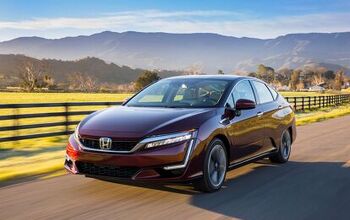
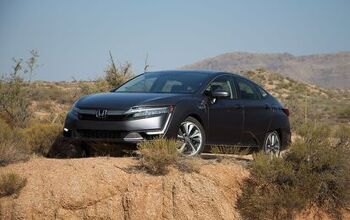
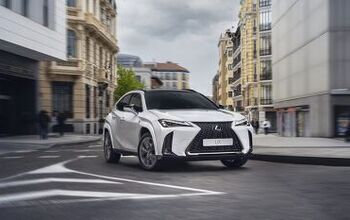




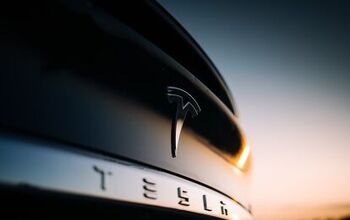
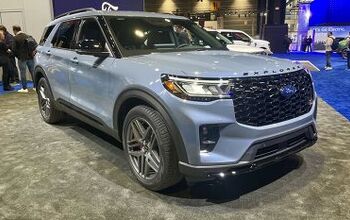
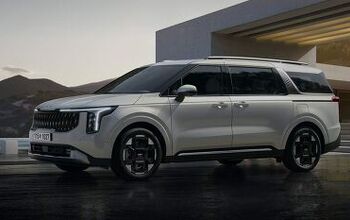



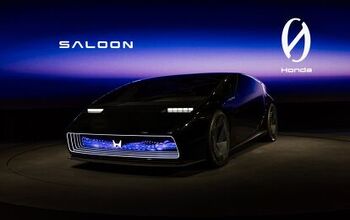
Comments
Join the conversation